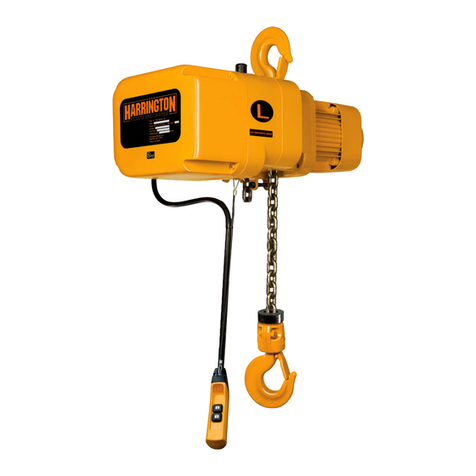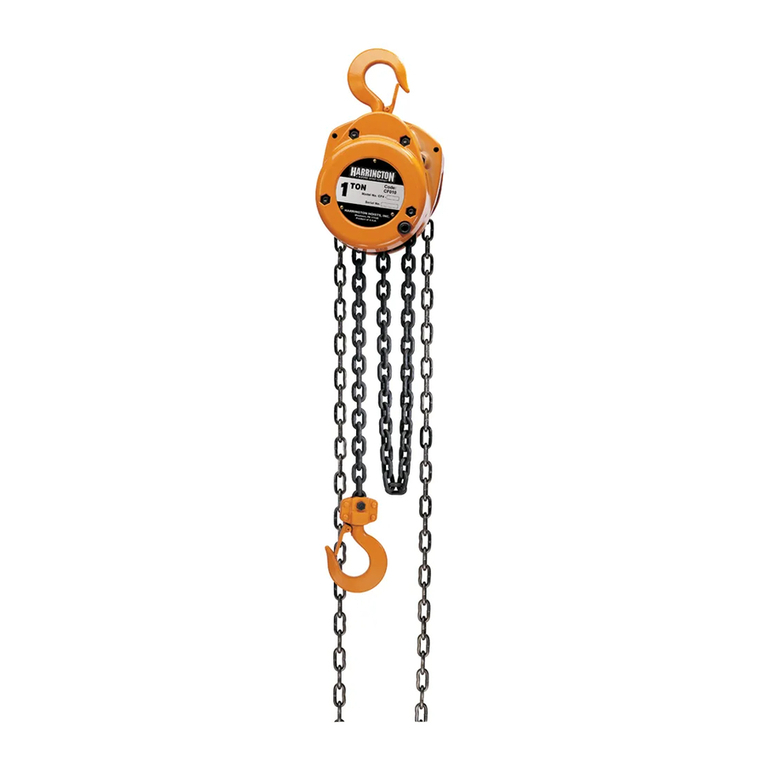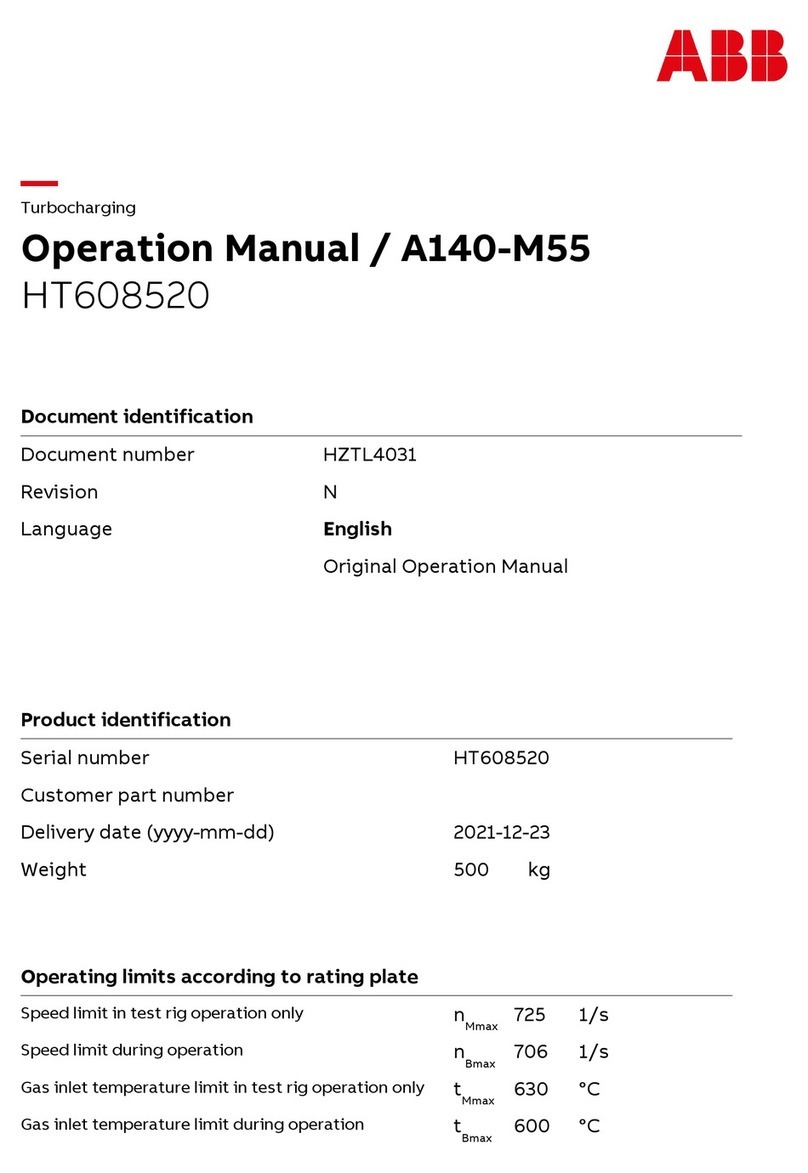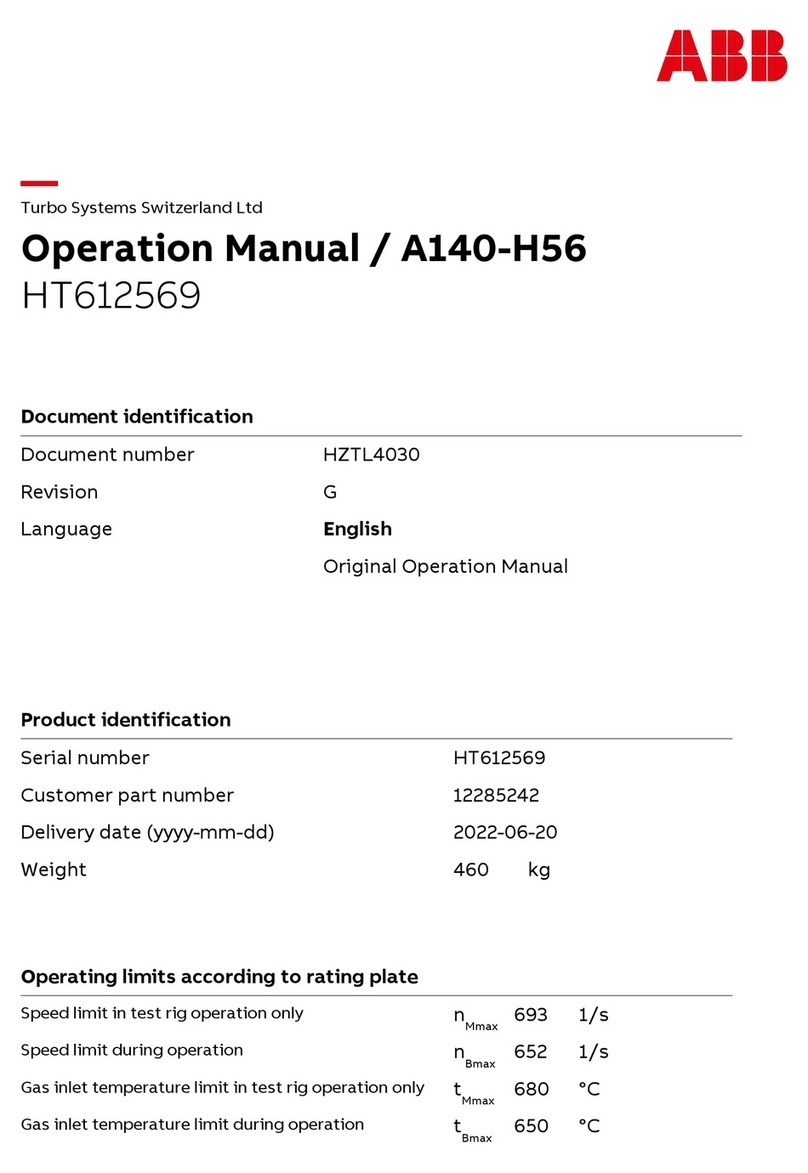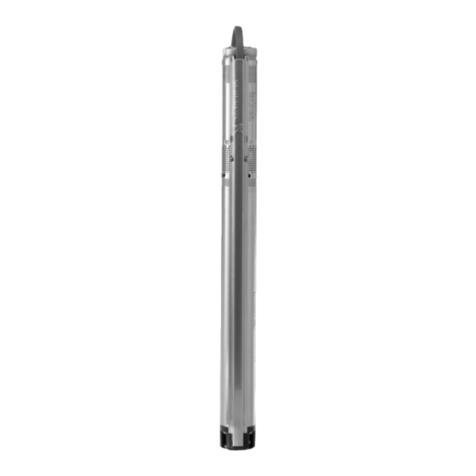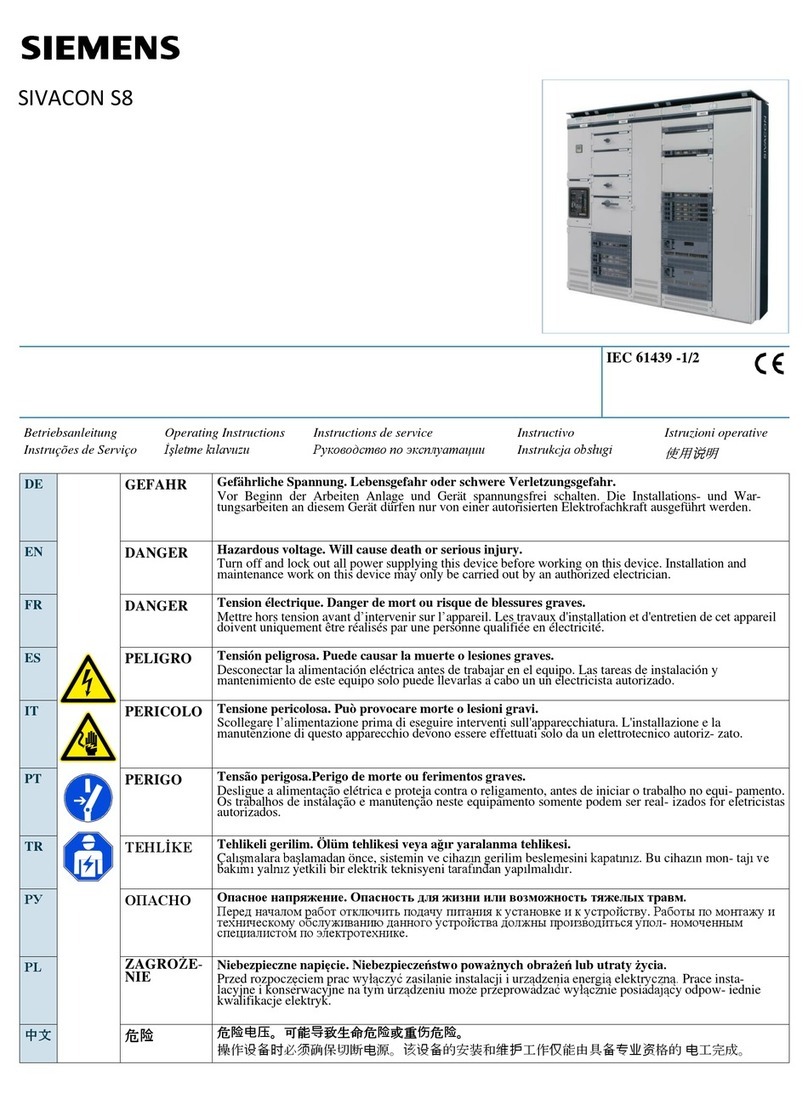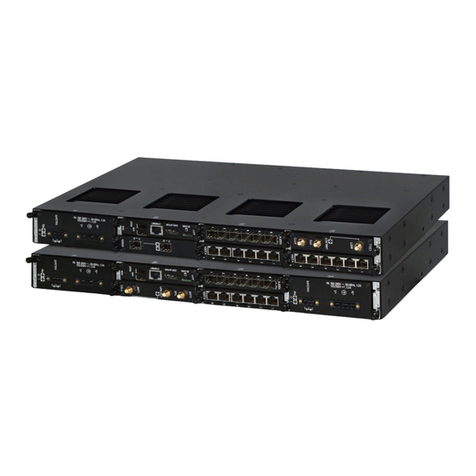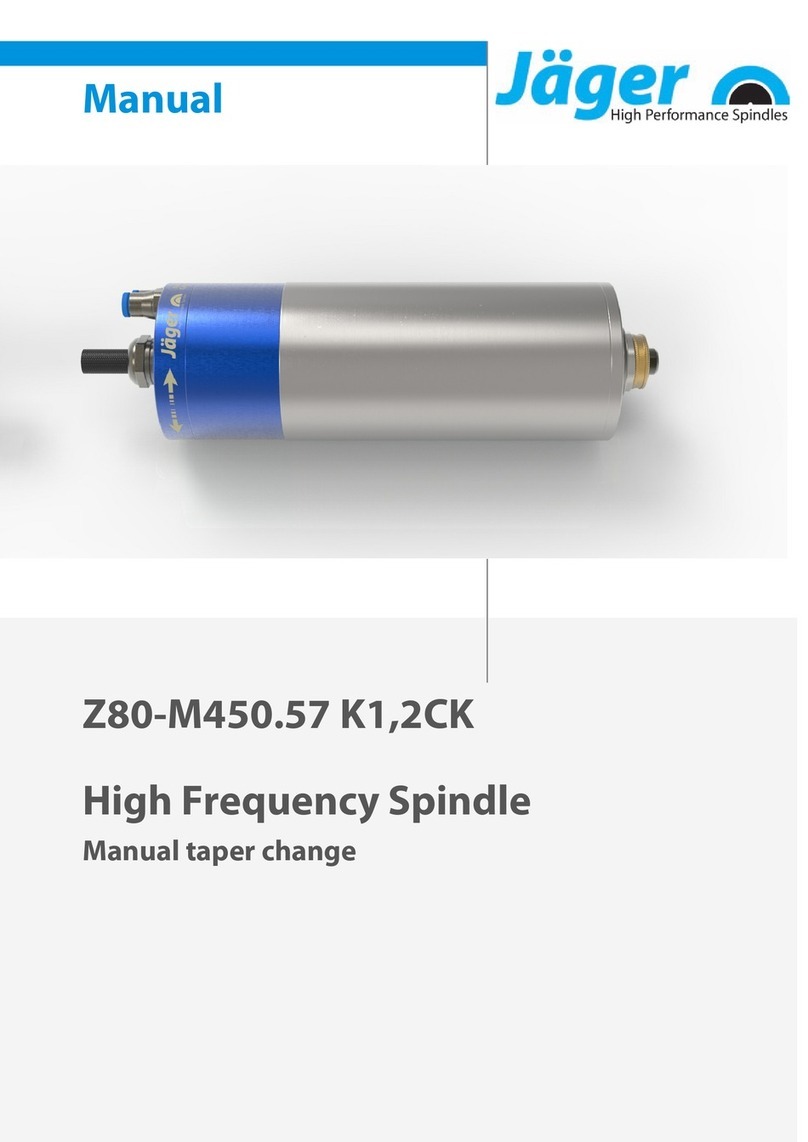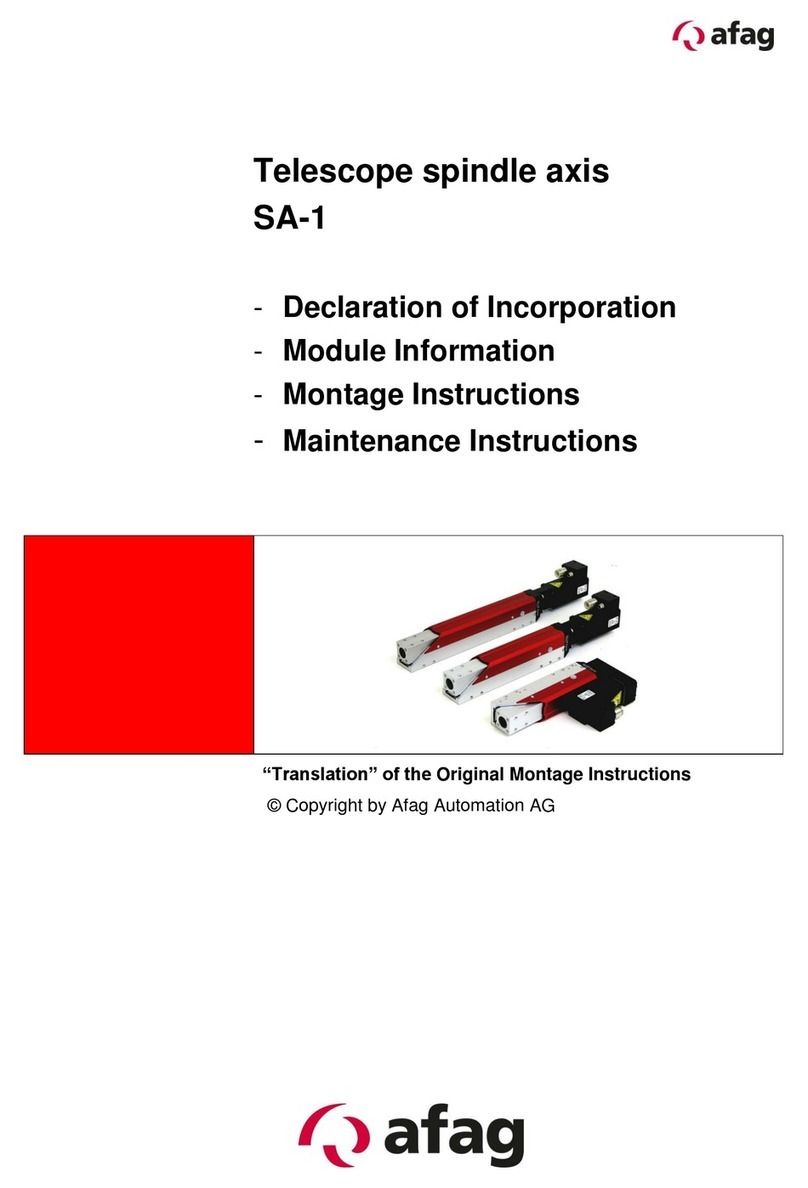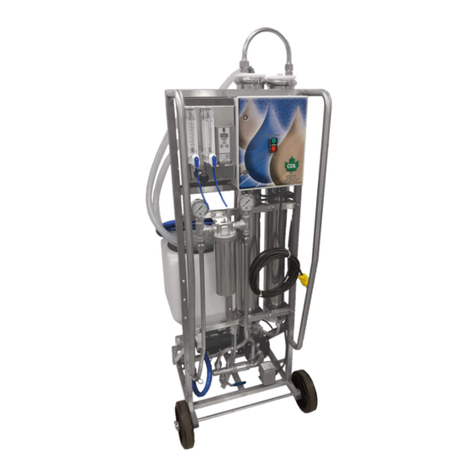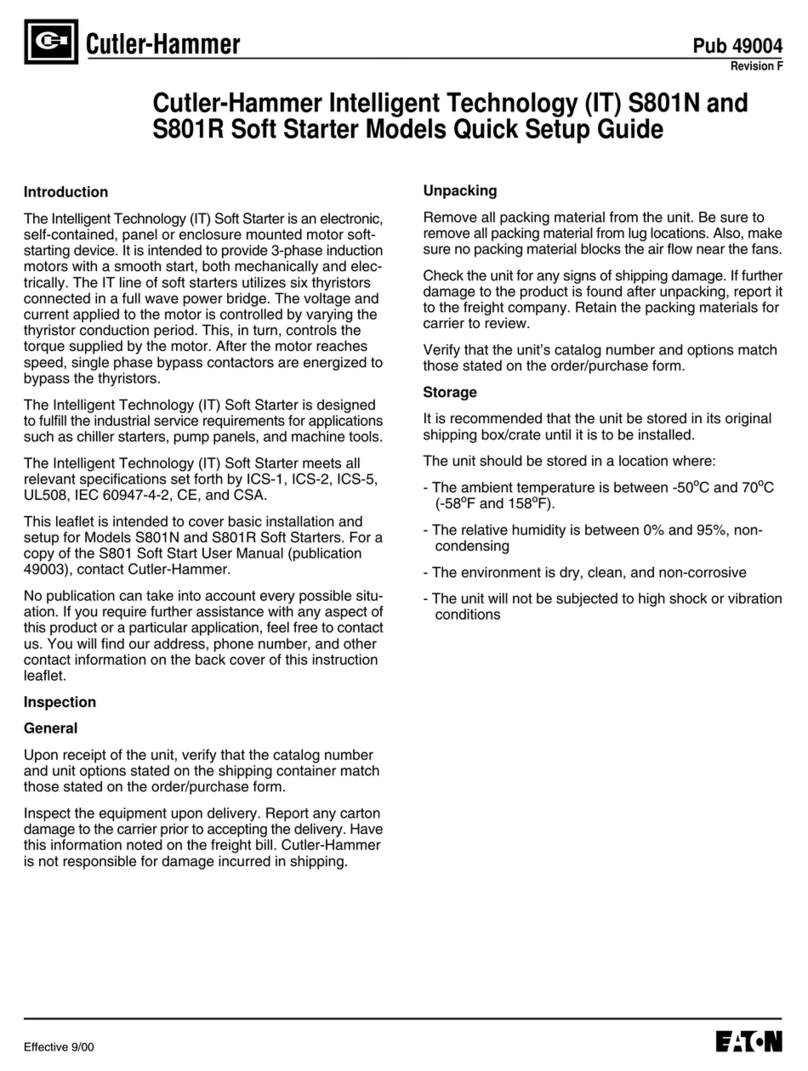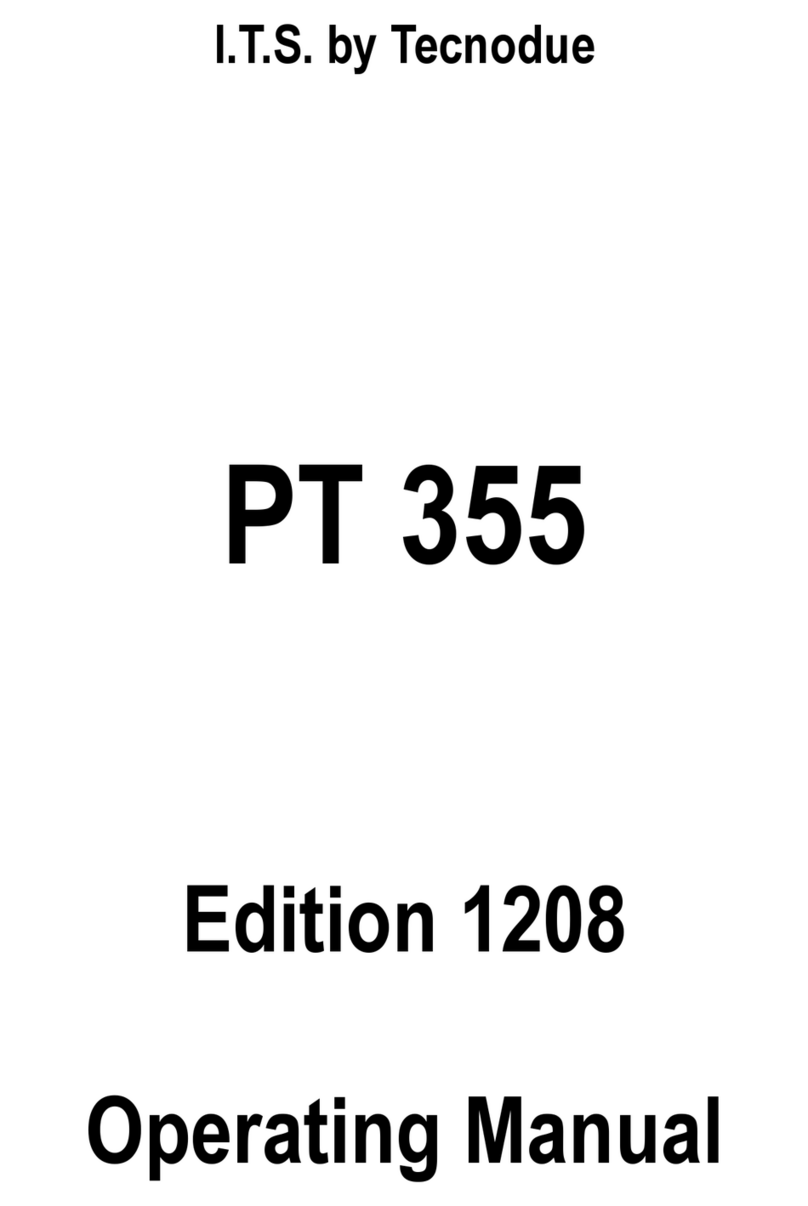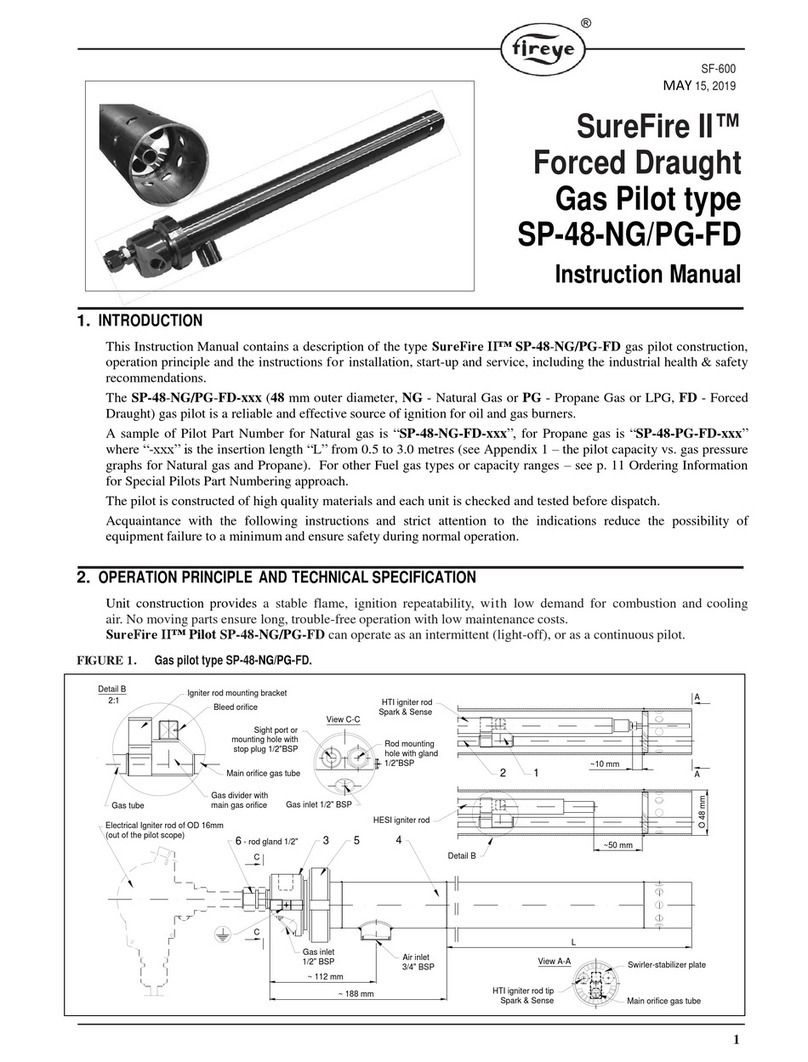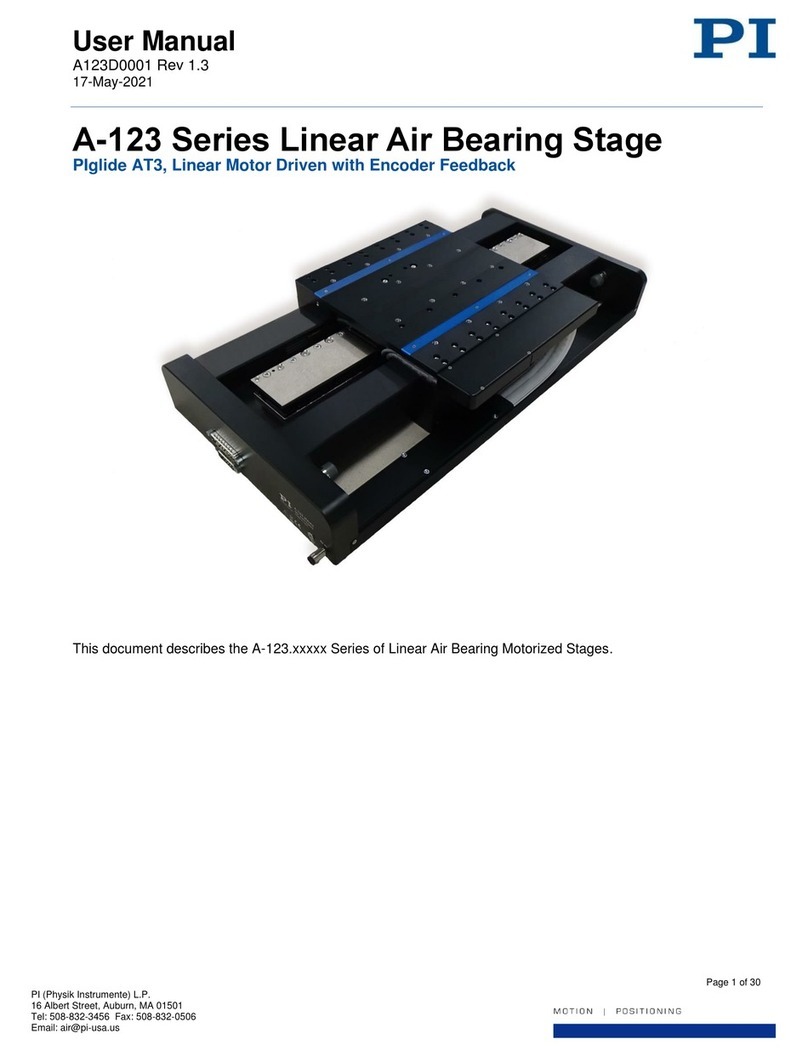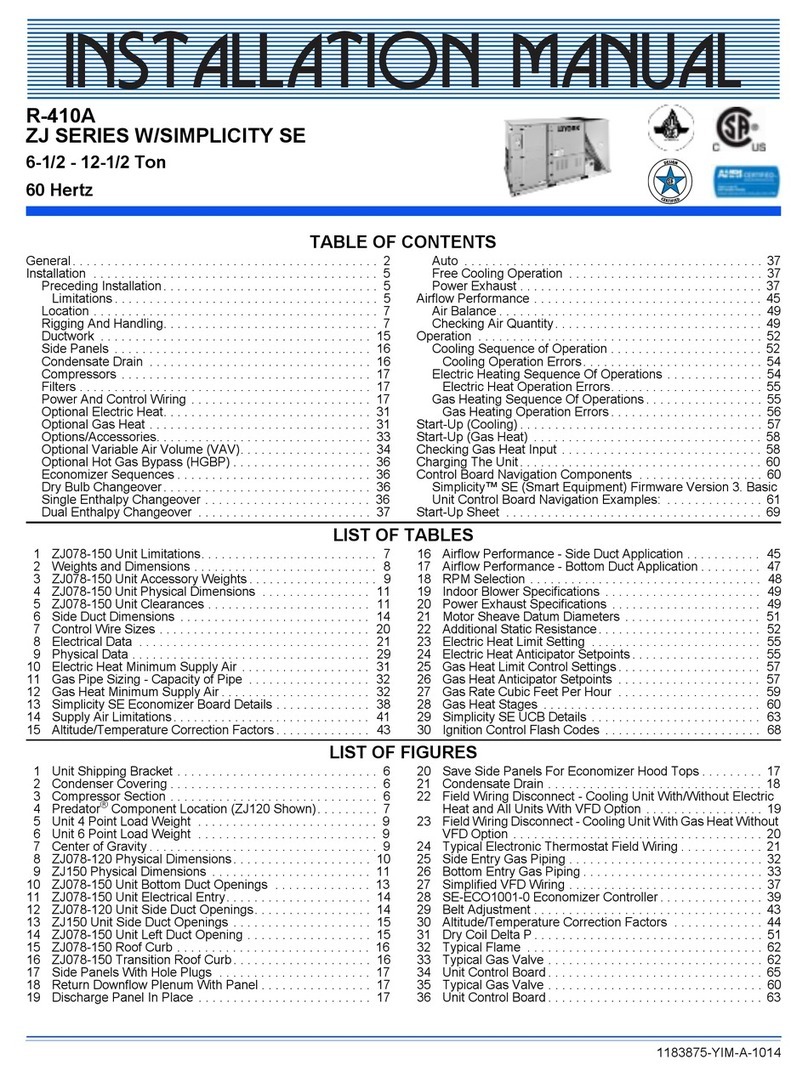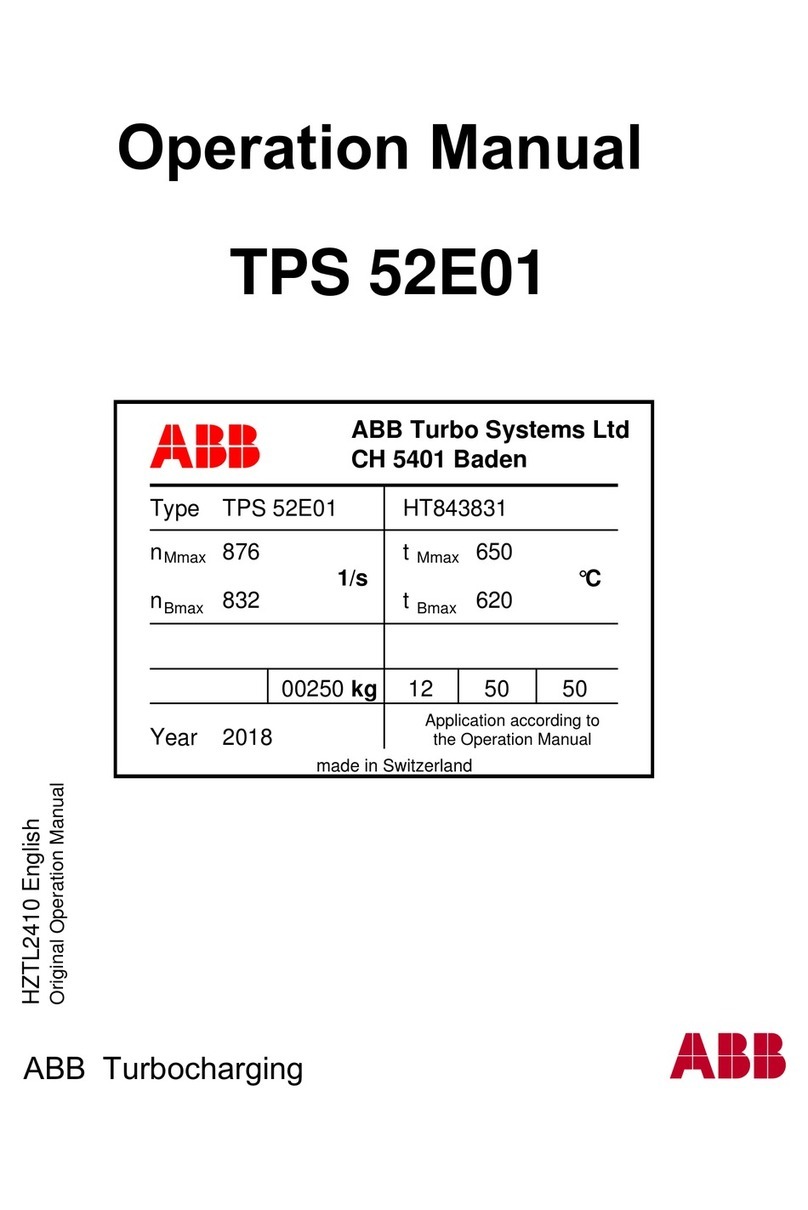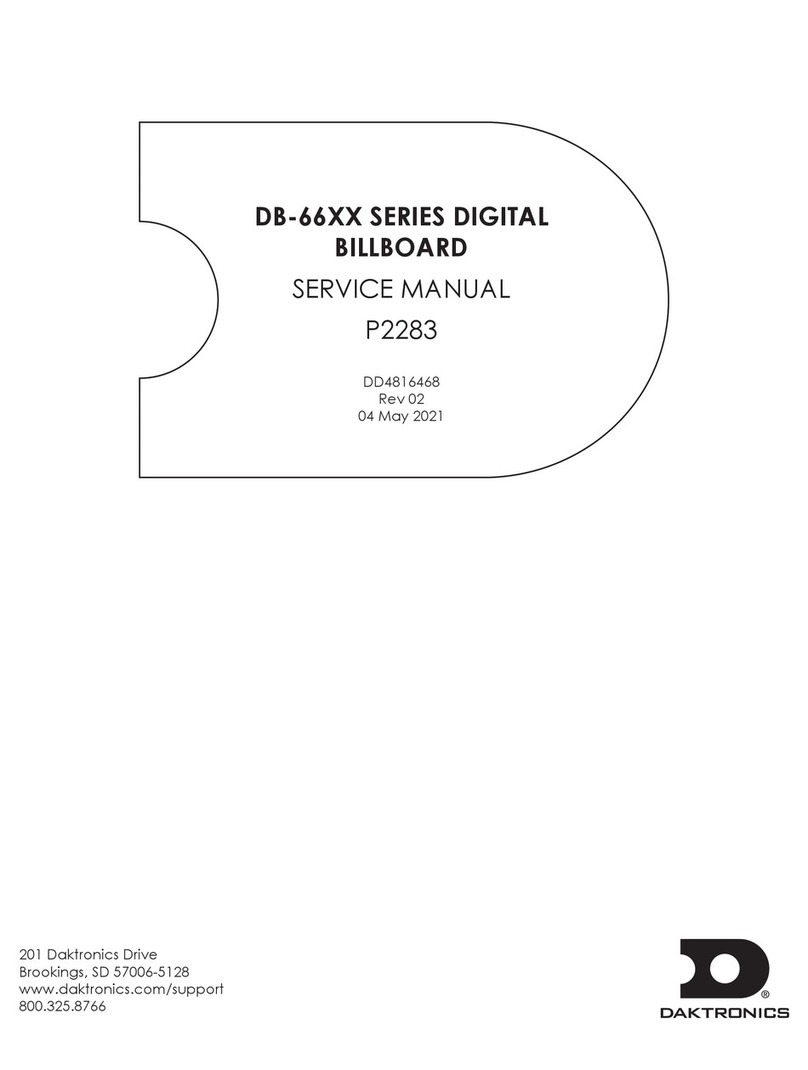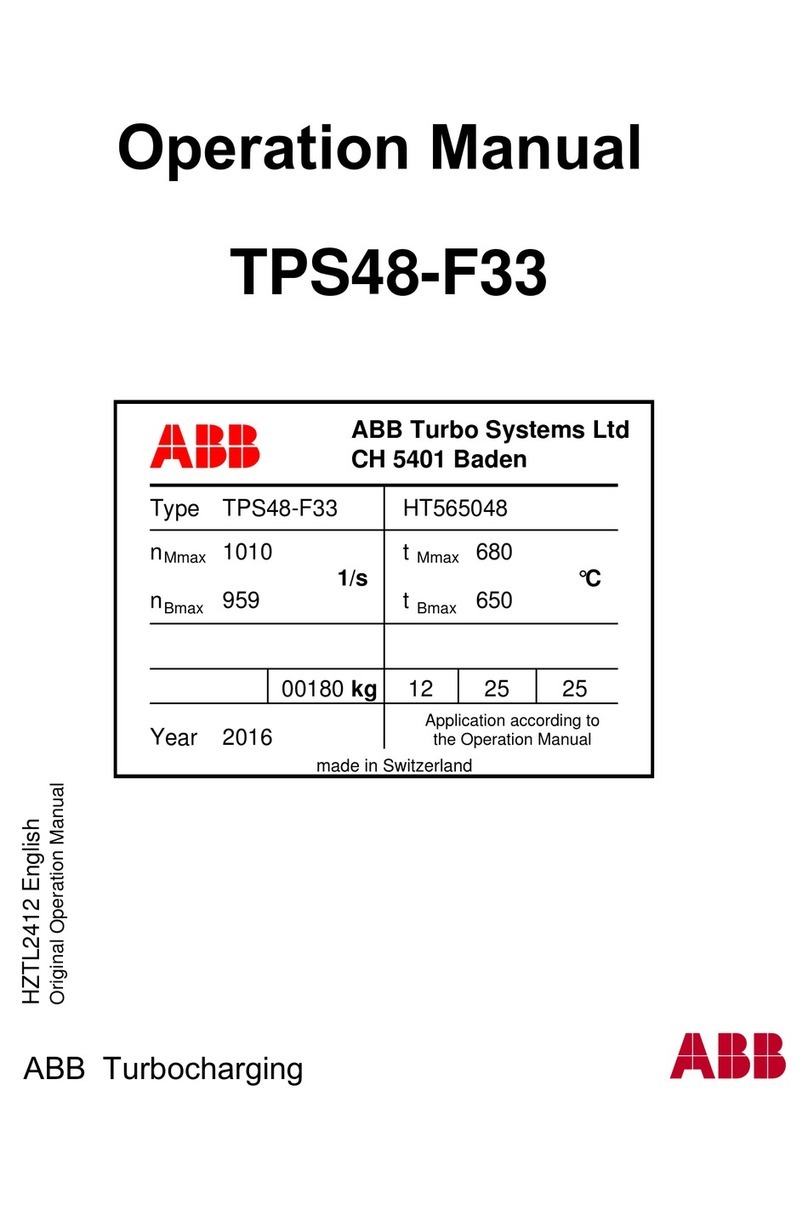Harrington UBC010 User manual

Page 1 of 8
Universal Beam Clamp
OWNER’S MANUAL
1 Ton through 10 Ton Capacity
Effective: January 4, 2010
WARNING This equipment should not be installed,
operated or maintained by any person who has not read and
understood all the contents of this manual. Failure to read and
comply with the contents of this manual can result in serious bodily
injury or death, and/or property damage. Record the code and
serial number in the space provided below.
Code Number:
Serial Number:
Table of Contents
1.0 IMPORTANT INFORMATION AND WARNINGS……………. 1
2.0 TECHNICAL INFORMATION………………………………….. 2
3.0 PREOPERATIONAL PROCEDURES………………………. 2
4.0 OPERATION/USE ……………………………………………….3
5.0 INSPECTION…………………………………………………….. 3
6.0 MAINTENANCE…………………………………………………. 5
7.0 WARRANTY …………………………………………………….. 6
8.0 PARTS LIST …………………………………………………….. 6
9.0 INSPECTION/TEST CERTIFICATE ………………………….. 8
1.0 Important Information and Warnings
1.1 Terms and Summary
This manual provides important information for personnel involved with the installation, operation and maintenance of this product.
Although you may be familiar with this or similar equipment, it is strongly recommended that you read this manual before installing, operating
or maintaining the product.
Danger, Warning, Caution and Notice – Throughout this manual there are steps and procedures that can present hazardous situations.
The following signal words are used to identify the degree or level of hazard seriousness.
DANGER Danger indicates an imminently hazardous situation which, if not avoided, will result in death or serious injury, and
property damage.
WARNING Warning indicates an imminently hazardous situation which, if not avoided, could result in death or serious injury, and
property damage.
CAUTION Caution indicates a potentially hazardous situation which, if not avoided, may result minor or moderate injury or
property damage.
NOTICE Notice is used to notify people of installation, operation, or maintenance information which is important but not directly
hazard-related.
CAUTION
These general instructions deal with the normal installation, operation, and maintenance situations encountered with the equipment
described herein. The instructions should not be interpreted to anticipate every possible contingency or to anticipate the final system,
crane, or configuration that uses this equipment. For systems using the equipment covered by this manual, the supplier and owner of the
system are responsible for the system’s compliance with all applicable industry standards, and with all applicable federal, state, and local
regulations/codes.
Record your clamp’s Code and Serial Number (see Section 3) on the front cover of this manual for identification and future reference to
avoid referring to the wrong manual for information or instructions on installation, operation, inspection, maintenance, or parts.
Use only Harrington authorized replacement parts in the service and maintenance of this clamp.
WARNING
Equipment described herein is not designed for and MUST NOT be used for lifting, supporting, or transporting people, or for lifting or
supporting loads over people.
Equipment described herein should not be used in conjunction with other equipment unless necessary and/or required safety devices
applicable to the system, crane, or application are installed by the system designer, system manufacturer, crane manufacturer, installer,
or user.
Modifications to upgrade, rerate, or otherwise alter this equipment shall be authorized only by the original equipment manufacturer.
If equipment is used as a below-the-hook lifting device, refer to ANSI/ASME B30.20, “Safety Standard for Below-the-Hook Lifting
Devices”. As an above-the-hoist device, refer to applicable portion of ANSI/ASME B30.16.
Clamps used to handle hot molten material may require additional equipment or devices. Refer to ANSI Z241.2, “Safety Requirements
for Melting and Pouring of Metals in the Metalcasting Industry”.
Failure to read and comply with any one of the limitations noted herein can result in serious bodily injury or death, and/or property
damage.

Page 2 of 8
NOTICE
It is the responsibility of the owner/user to install, inspect, test, maintain, and operate a clamp in accordance with ANSI/ASME B30.20,
“Safety Standard for Below-the-Hook Lifting Devices” and ANSI/ASME B30.16, “Safety Standard for Overhead Hoists”. If the clamp is
installed as part of a total lifting system, such as an overhead hoist, crane or monorail, it is also the responsibility of the owner/user to
comply with the applicable ANSI/ASME B30 volume that addresses that type of equipment.
It is the responsibility of the owner/user to have all personnel that will install, inspect, test, maintain, and operate a clamp read the
contents of this manual and applicable portions of ANSI/ASME B30.20, “Safety Standard for Below-the-Hook Lifting Devices”,
ANSI/ASME B30.16, “Overhead Hoists (Underhung)” and OSHA Regulations. If the clamp is installed as part of a total lifting system,
such as an overhead hoist, crane or monorail, it is also the responsibility of the owner/user to comply with the applicable ANSI/ASME
B30 volume that addresses that type of equipment.
If the clamp owner/user requires additional information, or if any information in the manual is not clear, contact Harrington or the
distributor of the clamp. Do not install, inspect, test, maintain, or operate this clamp unless this information is fully understood.
A regular schedule of inspection of the clamp in accordance with the requirements of ANSI/ASME B30.20 and ANSI/ASME B30.16
should be established and records maintained.
2.0 Technical Information
2.1 Specifications
2.1.1 Operating Conditions and Environment:
Temperature Range: -4° to +140°F
(-20°C to +60°C)
Humidity: 100% or less
This is not underwater device.
Material: No special materials such as spark
resistant.
Do Not Use: In an alkaline/acidic or an organic solvent/explosive atmosphere.
2.1.2 Clamp Specifications:
Product Code UBC010 UBC020 UBC030 UBC050 UBC100
Capacity (Ton) 1 2 3 5 10
Flange Range (in) 3.00 to 7.50 3.00 to 7.50 4.00 to 12.00 4.00 to 12.00 6.00 to 13.25
Max. Beam Flange Thickness (in) 0.83 0.83 1.00 1.00 1.75
Net Weight (lbs) 8 9 19 22 55
3.0 Preoperational Procedures
3.1 Mounting Location
3.1.1 WARNING When used as a suspension device, ensure that the suspension and the supporting structure is adequate to support
the clamp, the hoist and its loads. If necessary consult a professional that is qualified to evaluate the adequacy of the suspension
location and its supporting structure.
3.1.2 WARNING When used as a below the hook lifting device, ensure that the load’s attachment point is able to support the weight of
the load and the load is able to withstand the gripping force of the clamp without deforming or breaking.
3.2 Optional Suspender
3.2.1 Refer to Parts List in section 8.0 for installation of optional suspender parts.
3.3 Mounting/Using the Clamp
3.3.1 Mount the beam clamp to a supporting structure over work area. Position the jaws over the lower beam flange and tighten the
clamp by rotating the clamp handle clockwise to secure it in place.
3.3.2 For use of the clamp as a lifting device, suspend the clamp from the hoist bottom hook. Position the load in between the jaws and
tighten the clamp by rotating the handle clockwise. Be sure that the load is fixed in between the clamp jaws securely. The clamp
should be attached to the load at a place to ensure the load is evenly distributed and balanced.
3.3.3 WARNING Ensure that the fixed suspension point rests on the center of the hook’s saddle and that the hook’s latch is engaged.
3.3.4 Use lock nut for all applications. Ensure the clamp is securely positioned and tightened, and tighten the lock nut. Ensure that at
least one thread is exposed beyond the nut.
3.4 Preoperational Checks and Trial Operations
3.4.1 WARNING Confirm the adequacy of the rated capacity for all clamps and all other components of lifting system before use.
Inspect all load suspension members for damage prior to use and replace or repair all damaged parts.
3.4.2 Record the clamp's Code and Serial Number (from the name plate on the clamp; see Section 8.0) in the space provided on the
cover of this manual.
3.4.3 Ensure that the clamp is properly installed to a fixed point.
3.4.4 Ensure that all nuts and bolts are sufficiently fastened. (Continued on next page)

Page 3 of 8
(Continued)
3.4.5 Confirm proper operation:
•Before operating read and become familiar with Section 4 – Operation/Use.
•Before operating ensure that the clamp meets the Inspection, Testing and Maintenance requirements of ANSI/ASME B30.20
and ANSI/ASME B30.16.
•Before operating ensure that nothing will interfere with the full range of the lifting system’s operation.
4.0 Operation/Use
4.1 Introduction
DANGER
Do Not Walk Under a Suspended Load
WARNING
Operators for lifting systems involving a clamp shall be required to read the operation section of this manual, the warning contained in this
manual, instruction and warning labels on the clamp or lifting system, and operation sections of ANSI/ASME B30.20, ANSI/ASME B30.16
and ANSI/ASME B30.10. The operator shall also be required to be familiar with the hoist and hoist controls before being authorized to
operate the clamp or lifting system.
Clamp users should be trained in proper rigging procedures for the attachment of the clamp to the loads.
Clamp users should be trained to be aware of potential malfunctions of the equipment that require adjustment or repair, and to be
instructed to stop operation if such malfunctions occur, and to immediately advise their supervisor so corrective action can be taken.
Clamp users should have normal depth perception, field of vision, reaction time, manual dexterity, and coordination.
Clamp users should not have a history of or be prone to seizures, loss of physical control, physical defects, or emotional instability that
could result in actions of the operator being a hazard to the operator or to others.
Clamp users should not use a clamp or operate lifting system when under the influence of alcohol, drugs, or medication.
Clamp is intended only for vertical lifting service or freely suspended unguided loads. Do not use clamp for loads that are not lifted
vertically, loads that are not freely suspended, or loads that are guided.
NOTICE
• Read ANSI/ASME B30.20, ANSI/ASME B30.16 and ANSI/ASME B30.10.
• Read the clamp manufacturer’s Operating and Maintenance Instructions.
• Read all labels attached to equipment.
• Do not use a clamp before reading Owner’s Manual.
The beam clamp can be used as a below-the-hook lifting device or an above-the-hoist suspending device. Per the ANSI/ASME B30 standards,
the use of a clamp is subject to certain hazards that cannot be mitigated by engineered features, but only by the exercise of intelligence, care,
common sense, and experience in anticipating the effects and results of utilizing the clamp. Use this guidance in conjunction with other
warnings, cautions, and notices in this manual to govern the operation and use of the clamp.
4.2 Shall’s and Shall Not’s for Operation
WARNING
Improper operation of a clamp can create a potentially hazardous situation which, if not
avoided, could result in death or serious injury, and substantial property damage. To
avoid such a potentially hazardous situation THE OPERATOR SHALL:
• NOT lift more than rated load for the clamp.
• NOT use a clamp which has been modified without the
manufacturer's approval or certification to be in conformity with
applicable OSHA regulations.
• NOT use a clamp when the lifting system is restricted from
forming a straight line from the mounting point to the loading
point in the direction of loading.
• NOT use a damaged clamp.
• NOT operate a malfunctioning or unusually performing clamp.
• NOT use a clamp to lift, support, or transport people.
• NOT lift loads over people.
• NOT remove or obscure the warnings on the clamp.
• NOT use the clamp in such a way that could result in shock or
impact loads being applied to the clamp.
• NOT leave load supported by the clamp unattended unless
specific precautions have been taken.
• NOT use a clamp that is tagged “Out of Service” or otherwise
designated as nonfunctioning.
• NOT use a clamp on which the safety placards or decals are
missing or illegible.
• Make sure the temperature of the load does not exceed the
maximum allowable limits of the lifter.
• Be familiar with clamp adjustments, procedures, and warnings.
• Make sure the unit is securely attached to a suitable support
before applying load.
• Make sure clamp, slings, attachments are properly sized and
rigged.
• Make sure the hoist attached to the clamp is supported at the
hook saddle.
• Make sure load is balanced and load-holding action is secure
before continuing.
• Make sure all persons stay clear of the supported load.
• Report Malfunctions or unusual performances of the clamp and
remove the clamp from service until the malfunction or unusual
performance is resolved.
• Warn personnel before lifting or moving a load.
• Warn personnel of an approaching load.

Page 4 of 8
• Maintain a firm footing or be otherwise secured when using the
clamp.
• Use hook latches when connecting a hoist to the clamp.
• Make sure hook latches are closed and not supporting any parts
of the clamp.
• Make sure the load is free to move and will clear all obstructions.
• Inspect the clamp regularly, replace damaged or worn parts, and
keep appropriate records of maintenance.
• Avoid swinging the load.
• Use the clamp manufacturer’s recommended parts when
repairing the unit.
• NOT allow your attention to be diverted from using the clamp or
lifting system.
• NOT allow the clamp to be subjected to sharp contact with other
clamps, structures, or objects through misuse.
• NOT adjust or repair the clamp unless qualified to perform such
adjustments or repairs.
• NOT operate except with manual power
5.0 Inspection
5.1 Initial Inspection – Prior to initial use, all new, altered, or modified clamps shall be inspected by a designated person to ensure
compliance with the applicable provisions of this manual.
5.2 Inspection Classification – The inspection procedure herein is based on ANSI/ASME B30.20. Inspections for clamps in regular service
are divided into EVERY LIFT, FREQUENT and PERIODIC groups based upon the intervals at which inspection should be performed. The
intervals in turn are dependent upon the degree of service and usage the clamps are subjected to. EVERY LIFT inspection should be
made before/or during every lift. FREQUENT and PERIODIC inspections should be made with respective intervals between inspections as
defined in Table 5-2.
Table 5-2 Inspection Intervals
Service FREQUENT Inspection PERIODIC Inspection
Normal Service Monthly Yearly
Heavy Service Weekly to Monthly Semiannually
Severe Service Daily to Weekly Quarterly
Special or Infrequent Service As recommended by a qualified
person before and after each
occurrence.
As recommended by a qualified person before
the first such occurrence and as directed by the
qualified person for any subsequent occurrences.
5.3 Every Lift Inspection
5.3.1 Inspections should be made before and/or during every lift in accordance with Table 5-3, “Every Lift Inspection.” The operator shall
inspect for any indication of damage, including observations during operation for any damage that might occur during the lift.
Table 5-3 Every Lift Inspection
Surface of the load for debris
Condition and operation of the controls and moving/functional components
5.4 Frequent Inspection
5.4.1 Inspections should be made on a FREQUENT basis in accordance with Table 5-4, “Frequent Inspection.” Included in these
FREQUENT Inspections are observations made during operation for any defects or damage that might appear between Periodic
Inspections. Evaluation and resolution of the results of FREQUENT Inspections shall be made by a designated person such that
the clamp is maintained in safe working condition.
Table 5-4 Frequent Inspection
All functional operating mechanisms for proper operation and adjustment, maladjustment.
Lifting system components for deformation, cracks, or significant wear
Structural members for deformation, cracks, or excessive wear
Loose or missing fasteners, nameplates, and warning labels.
Connection points between Clamp and Hoist or/and support structure in accordance with ANSI/ASME B30.20 and
ANSI/ASME B30.16
CAUTION
Improper operation of a clamp can create a potentially hazardous situation which, if not avoided, could result in minor
or moderate injury, or property damage. To avoid such a potentially hazardous situation THE OPERATOR SHALL:

Page 5 of 8
5.5 Periodic Inspection
5.5.1 Inspections should be made on a PERIODIC basis in accordance with Table 5-5, “Periodic Inspection.” Evaluation and resolution of
the results of PERIODIC Inspections shall be made by a designated person such that the clamp is maintained in safe working
condition.
5.5.2 For inspections where load suspension parts of the clamp are disassembled, a load test per ANSI/ASME B30.20 must be performed
on the clamp after it is re-assembled and prior to its return to service.
Table 5-5 Periodic Inspection
Requirements of frequent inspection.
Evidence of loose bolts, nuts, or rivets.
Evidence of worn, corroded, cracked, or distorted parts such as clamp handles, screws, pins, bushings, snap rings,
spacers, nuts, and suspenders.
Evidence of damage to supporting structure.
Function label on clamp for legibility.
Warning label properly attached to the clamp and legible.
5.6 Inspection Methods and Criteria
5.6.1 This section covers the inspection of specific items. The list of items in this section is based on those listed in ANSI/ASME B30.20
and ANSI/ASME B30.16 for the Every Lift, Frequent and Periodic Inspection.
5.6.2 Every Lift Inspection – Performed by the operator before and/or during every lift. Not intended to involve disassembly of the clamp.
Disassembly for further inspection would be required only if every lift inspection results so indicate. Disassembly and further
inspection should only be performed by a qualified person trained in the disassembly and re-assembly of the clamp.
5.6.3 Frequent Inspection - Not intended to involve disassembly of the clamp. Disassembly for further inspection would be required only
if frequent inspection results so indicate. Disassembly and further inspection should only be performed by a qualified person trained
in the disassembly and re-assembly of the clamp.
5.6.4 Periodic Inspection - Disassembly of the clamp is required. Disassembly should only be performed by a qualified person trained in
the disassembly and re-assembly of the clamp.
Table 5-6 Clamp Inspection Methods and Criteria
Item Method Criteria Action
Functional
operating
mechanisms.
Visual Mechanisms should function properly. Components should not be deformed,
scarred or show significant wear.
Repair or replace
as required.
Mechanical and
Lifting System –
Components
Visual, Function Clamp components including clamp handles, suspenders, spacers, bushings,
snap rings, and pins should be free of cracks, distortion, significant wear and
corrosion. Evidence of same can be detected visually.
Replace.
Bolts, Nuts and
Rivets
Visual, Check
with Proper Tool
Bolts, nuts and rivets should not be loose, deformed or corroded. Tighten or
replace as
required.
Warning Labels Visual Warning Labels should be affixed to the clamp and be legible. Replace.
Clamp Capacity
Label
Visual The label that indicates the capacity of the clamp should be legible and securely
attached to the clamp.
Replace.
6.0 Maintenance
6.1 For clamp maintenance or storage, comply with the following points.
6.1.1 CAUTION
Possibility of corrosion on components of the clamp
increases for installations where salt air and high
humidity are present. Make frequent and regular
inspections of the clamp’s condition and operation.
Do not store the clamp while supporting a load.
Remove any dirt or water on the clamp.
Store the clamp in a dry and clean area.
Perform all inspections given in “5.0 Inspection” if
irregularity of the clamp is found after operation
6.2 Disassembly/Assembly
6.2.1 When re-assembling the clamp, refer to parts list figure in Section 8.0 for the proper component placement and orientation.

Page 6 of 8
7.0 Warranty
Warranty explanation and terms.
All products sold by Harrington Hoists, Inc. are warranted to be free from defects in material and workmanship from date of shipment by
Harrington for the following periods:
Manual Hoists, Trolleys & Beam Clamps – 2 years
NER/ER Hoists Enhanced Features Models – 3 Years
Electric Hoists, Air Hoists & Trolleys, Crane Components – 1 year
Spare / Replacement Parts – 1 year
NER/ER Enhanced Feature DC Current Brake – 10 years
The product must be used in accordance with manufacturer’s recommendations and must not have been subject to abuse, lack of maintenance,
misuse, negligence, or unauthorized repairs or alterations.
Should any defect in material or workmanship occur during the above time period in any product, as determined by Harrington Hoist’s inspection
of the product, Harrington Hoists, Inc. agrees, at its discretion, either to replace (not including installation) or repair the part or product free of
charge and deliver said item F.O.B. Harrington Hoists, Inc. place of business to customer.
Customer must obtain a Return Goods Authorization as directed by Harrington or Harrington’s published repair center prior to shipping product
for warranty evaluation. An explanation of the complaint must accompany the product. Product must be returned freight prepaid. Upon repair,
the product will be covered for the remainder of the original warranty period. If it is determined there is no defect, or that the defect resulted
from causes not within the scope of Harrington’s warranty, the customer will be responsible for the costs of returning the product.
Harrington Hoists, Inc. disclaims any and all other warranties of any kind expressed or implied as to the product’s merchantability or fitness for a
particular application. Harrington will not be liable for death, injuries to persons or property or for incidental, contingent, special or consequential
damages, loss or expense arising in connection with the use or inability whatever, regardless of whether damage, loss or expense results from
any act or failure to act by Harrington, whether negligent or willful, or from any other reason.
8.0 Parts List
Figure
Number Part Name
Parts
Per
Clamp
1 Ton 2 Ton 3 Ton 5 Ton 10 Ton
1 Main Pin 1 UBC1001920 UBC10019201 UBC1001919 UBC10019191 UBC1003104
2 Snap Ring 2 UBC5100087 UBC5100125 UBC5100175
3 Clamp Handle 1 UBC10008282 UBC10008281 UBC1003101
4 Clamp Screw 1 UBC1003075 UBC1003076
5 Spring Pin 1 UBC35041 UBC35042
6 Bushing 2 UBCC8888016 UBC30221593 UBC30221595
7 Lock Nut 1 UBC36786 UBC36789
8 Name Plate 1 80191 80192 80193 80194 80195
9 Warning Tags 1 80190
10 Suspender (Optional) 1 SK2 SK5 SK10
11 Suspender Spacer
(Optional) 2 UBC1001922 UBC1001921 UBC1003100
Harrington Hoists, Inc.
www.harringtonhoists.com
Harrington Hoists - Western Division
401 West End Avenue 2341 Pomona Rincon Rd. #103
Manheim, PA 17545-1703 Corona, CA 91720-6973
Phone: 717-665-2000 Phone: 951-279-7100
Toll Free: 800-233-3010 Toll Free: 800-317-7111
Fax: 717-665-2861 Fax: 951-279-7500
UBCOM

Page 7 of 8
This Page Intentionally Left Blank

Page 8 of 8
Harrington Hoists, Inc. Harrington Hoists, Inc.
401 West End Avenue 2341 Pomona Rd #103
Manheim, PA 17545 Corona, CA 92880
Phone: (717) 665-2000 Phone: (951) 279-7100
www.harringtonhoists.com
Certificate of
Inspection and Test – Universal Beam Clamp
This certifies that the following Harrington product:
•Conforms to the latest versions of ASME BTH-1, ASME B30.20 and ASME B30.16.
•Was thoroughly inspected.
•Was subjected to a static load test in accordance with the latest version of ASME
B30.20.
Code:
Rated Capacity:
Serial No.:
Test Date:
Load Applied: % of rated capacity
Other/Remarks:
Mark Miller Chris Hess
Quality Manager Manager of Engineering
This manual suits for next models
4
Table of contents
Other Harrington Industrial Equipment manuals
